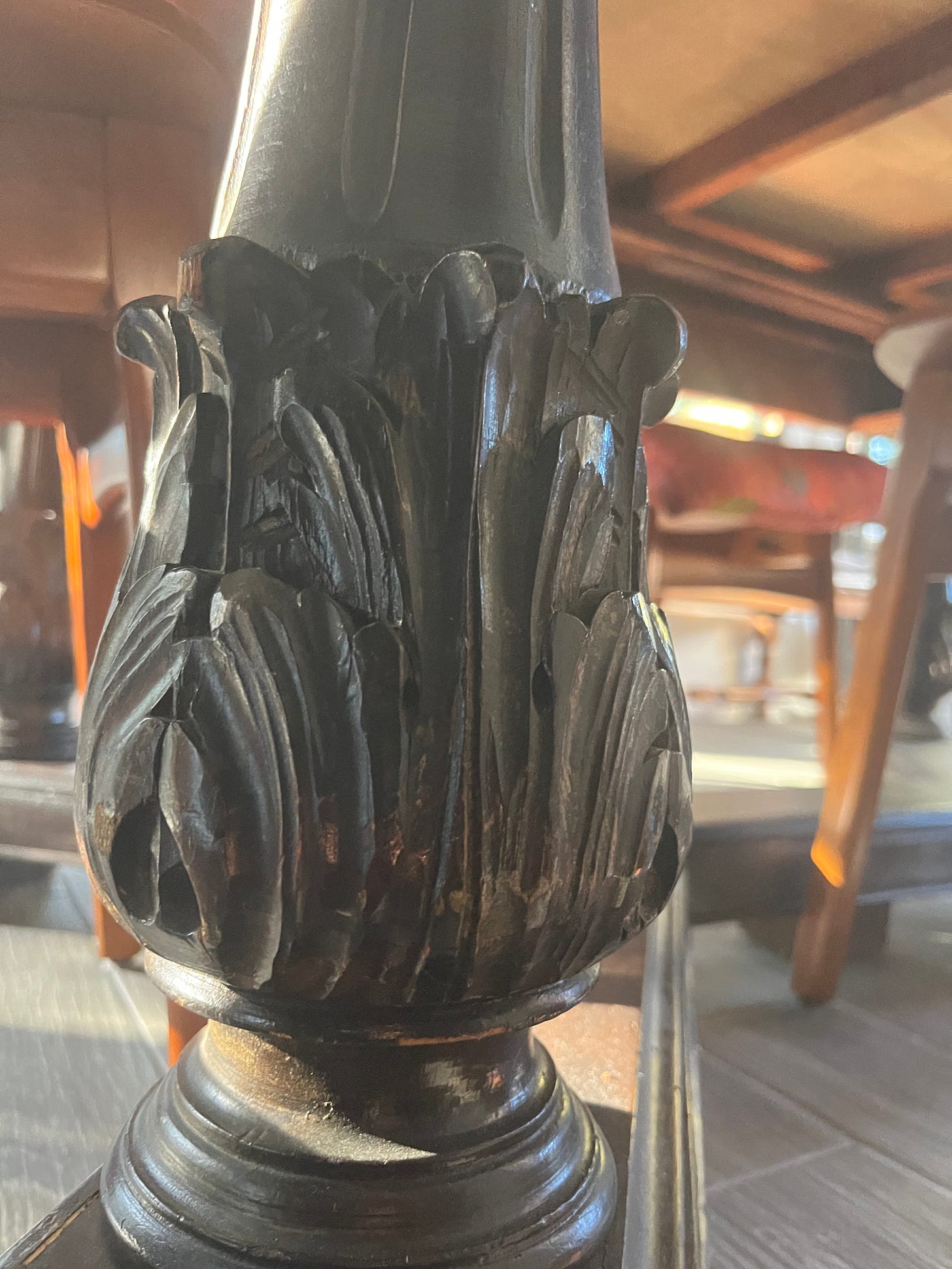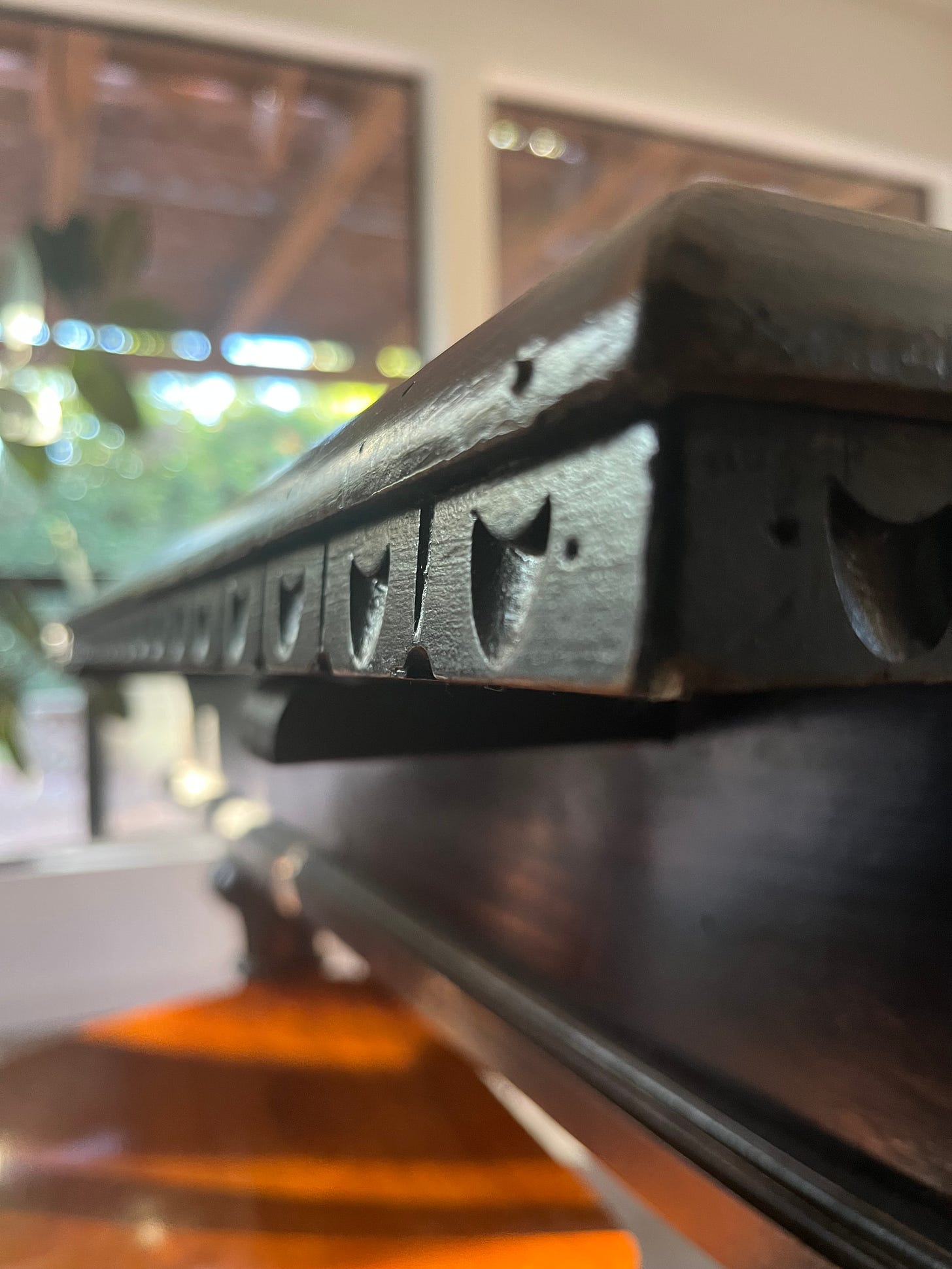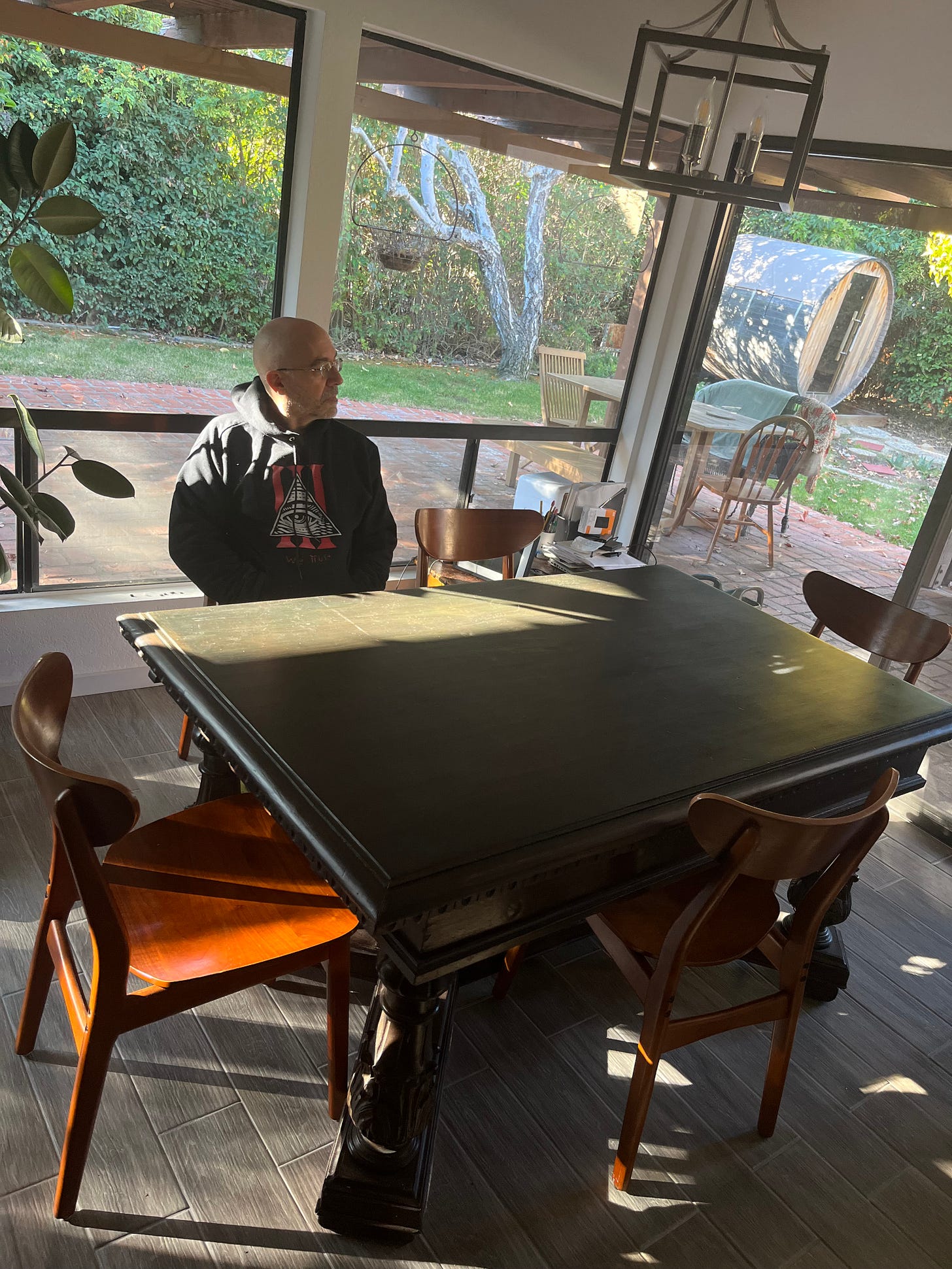The Table: At the Intersection of Food, Family, and History
It’s late into the night—usually the time when I do my best work. I love the silence and stillness of it all. No distractions. No phone ringing. Where I live, the only sound to ever break the quiet of the night is the high-pitched yip-howls of the coyotes hunting in the hills. Other than that, it’s nearly pitch-black outside, and you could hear a pin drop 300 yards away.
I’m sitting at my dining table, where I just finished a writing marathon. That’s when my focus shifts from the piece I was working on to the table itself.
We live at a time when most furniture is made in a factory according to the dictates of planned obsolescence. Things break quickly, and it’s cheaper to replace them than it is to fix them. The never-ending cycle of “buy-break-throw away” is horrendously wasteful but keeps the GDP happy. It’s convenient. It’s easy. But when everything is replaceable, something is lost.
This table is a reminder that it doesn’t have to be this way. It raises a metaphorical middle finger toward planned obsolescence. It has stories to tell about how history is not only found in the pages of a book. Generations of my family have gathered around this table for 112 years. It was a gift to my great-grandparents on the occasion of their wedding in 1913, in a little town in Lombardy. From my great-grandparents, it was passed to my grandfather, who passed it to my father, who passed it to me. During my childhood, I would have lunch at this table whenever my father would take me to visit his parents, which usually was twice a week. Every single Christmas meal until I moved to the United States (and quite a few even afterwards) took place around it. Same story for most of my birthdays. The amount of insanely good food emerging from my grandmother’s kitchen that I consumed at this table is hard to put into words.
And now I’m in California, halfway across the world, still sitting here to eat and often to work as well. My daughter is the fifth generation of my family to eat her meals on this surface. Sometimes I try to imagine everything that this object has seen, and I can’t. So much history has taken place since my great-grandparents received it. A year after their wedding is when Archduke Franz Ferdinand took a bullet to the neck, and WWI knocked at the door. In the aftermath of the war, fascism gained ground until becoming a full-fledged dictatorship. WWII broke out, and my family was still eating lunch and dinner at this table while German troops took control of Italy, and American bombs were falling throughout the country. Then, allied troops and partisans brought down fascism, and Mussolini was executed. Fast forward, and you get the rebuilding of Italy in the post-war years, the student movement of the 1960s and 1970s, the Years of Lead, the changes brought by new technologies, the internet revolution, and a thousand other things.
Through all of this, one thing never changed: every single day, someone in my family would sit by this table and have a meal. So, whenever I do the same now, in 2025, I’m connecting with a piece of history: my own family’s history and the history of the world. To me, this is not just furniture. And it is not a simple object. I like to think that it has absorbed a little bit of the soul of each person in my family across the decades. If there ever is a place where I truly belong, it is sitting at this table.






one of my most favorite stories, an artifact that grounds us and provides a living history!
What an exquisite heirloom. And so beautifully written and felt… hoping this table stays in your family for many generations to come ✨